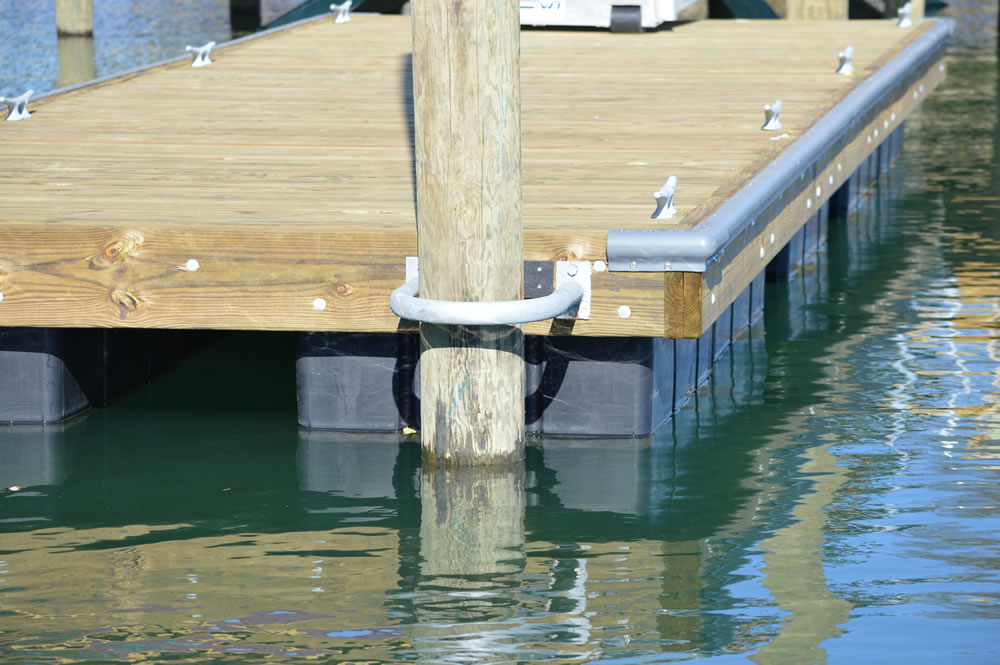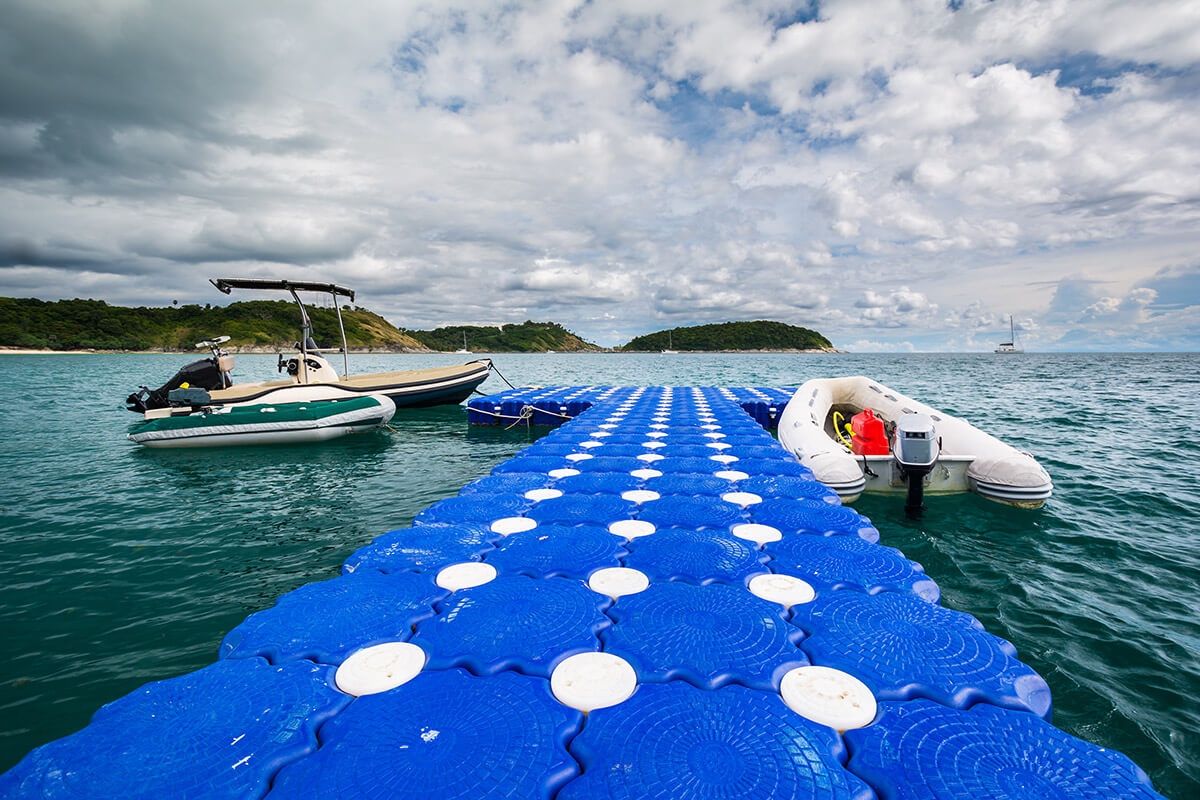Just How Floating Dock Company Knowledge Can Raise Your Waterside Experience
Just How Floating Dock Company Knowledge Can Raise Your Waterside Experience
Blog Article
Develop the Perfect Docking Solution With Floating Docks
Floating docks existing a versatile remedy for a range of maritime requirements, adapting flawlessly to changing water levels and diverse vessel kinds. As we discover the vital aspects that add to the performance of floating docks, a number of crucial elements relating to security and upkeep will arise, increasing concerns concerning exactly how to enhance your docking experience.

Benefits of Floating Docks
Floating docks deal numerous benefits that make them a suitable option for various maritime applications. One of the main advantages is their flexibility to altering water degrees. Unlike repaired docks, floating docks increase and fall with the trend, guaranteeing consistent availability for vessels. This attribute is especially crucial in areas vulnerable to significant tidal changes or seasonal water degree modifications.
Furthermore, floating docks are commonly easier and quicker to set up compared to standard set structures. Their modular design enables straightforward setting up and disassembly, facilitating maintenance and relocation when essential. This flexibility is particularly advantageous for short-term applications or in atmospheres where problems may change.
Floating docks additionally often tend to be extra environmentally pleasant, as they reduce disturbance to the seabed and surrounding marine ecosystems. Their resilient nature minimizes the danger of damage to aquatic life, promoting a much healthier environment. These docks can be personalized to accommodate numerous vessel dimensions, making certain that they satisfy certain operational demands.
Inevitably, the combination of adaptability, simplicity of setup, and environmental considerations makes floating docks a very reliable solution for a wide array of maritime requirements.
Selecting the Right Products
Choosing the ideal products for floating docks is crucial to guarantee security, long life, and toughness. The selection of products straight impacts the dock's performance in various environmental problems, consisting of direct exposure to water, sunshine, and possible wear from aquatic traffic.
Typical products used for floating docks include light weight aluminum, timber, and high-density polyethylene (HDPE) Aluminum is light-weight, corrosion-resistant, and requires marginal upkeep, making it an outstanding option for long life. Its initial price can be greater compared to various other products.
Wood, while cosmetically appealing and providing a conventional look, can be prone to rot and pest damage otherwise effectively treated. Making use of pressure-treated wood or naturally sturdy types like cedar or redwood can reduce these issues.
HDPE is a preferred option because of its resistance to UV rays and chemicals, along with being environmentally pleasant. floating docks. It is offered and light-weight in different colors, enabling personalization
Ultimately, the right product option will rely on particular requirements, consisting of budget plan, preferred looks, and environmental factors to consider. Careful evaluation of these variables will certainly result in a effective and resilient floating dock option.
Layout Considerations for Security
When making floating docks, ensuring stability is a basic element that can substantially influence their capability and security. Stability in floating dock design is affected by various aspects, consisting of buoyancy, weight distribution, and the plan of parts. An optimal buoyancy system must make use of products that offer adequate lift while decreasing weight. This balance makes sure that the dock continues to be above water, even under varying tons.
Weight circulation is essential; equally dispersing loads across the dock protects against tilting and improves security. This can be achieved through strategic positioning of docking tools, such as fenders and cleats, along with correct spacing of drifts. In addition, the measurements of the dock must be attentively prepared. Bigger layouts can offer increased security, particularly in rough water conditions, while longer docks might need extra supports to avoid sagging.
Another vital factor to consider is the environmental influence, including wave action and wind. Including functions such as sidewalls or skirting can assist minimize the impacts of environmental pressures, preserving stability in damaging conditions. Ultimately, a combination of thoughtful design, material selection, and understanding of environmental variables will produce a drifting dock that satisfies both security and safety needs.
Installation Tips and Strategies

Next, safeguard the required authorizations and abide by local policies, which might determine setup techniques and environmental considerations. If called for, involve a certified specialist experienced in floating dock installations. Usage top quality materials designed directory for aquatic atmospheres to improve sturdiness and longevity.
When placing the dock, straighten it parallel to the coastline to facilitate very easy gain access to. Guarantee that the anchoring system is durable, utilizing concrete blocks or helical anchors to stabilize the dock against wind and wave activity. It's vital to make up seasonal water degree changes, consisting of possible ice motion in colder climates.
During the installment, double-check the dock's floatation and security prior to settling the anchoring. On a regular basis inspect the installation for any kind of signs of wear or damages. By adhering to these techniques and suggestions, you can attain a protected, functional, and visually pleasing floating dock installment that meets your requirements.
Upkeep and Treatment Guidelines
Caring and preserving for floating docks is critical to lengthening their life expectancy and making sure secure usage. Regular inspections need to be performed to determine any kind of indications of wear, damage, or aquatic growth. Seek fractures, loose fittings, or discolored locations on the dock's surface, as these problems can compromise architectural stability.
Cleansing is crucial. Use a stress washer to eliminate algae, barnacles, and particles, which can gather over time. For stubborn growth, take into consideration eco-friendly cleaner that won't hurt aquatic life.
Additionally, inspect the mooring lines and supports often to ensure they are totally free and protected from deterioration. Replace any frayed or damaged lines promptly to keep security.
During extreme climate, such as storms or freezing conditions, take precautionary measures. Safeguard the dock with added mooring lines and, if feasible, remove any kind of detachable elements to protect against damage.
Verdict
In final thought, the implementation of floating docks offers a flexible and reliable docking option suitable for numerous maritime applications. Their adaptability to fluctuating water levels, combined with a modular style, allows for very easy personalization and relocation. Selecting appropriate materials boosts both longevity and visual appeal, while mindful factor to consider of stability ensures safety and security and longevity. With proper setup and normal maintenance, floating docks can provide reliable and efficient docking experiences for a vast Read Full Report array of vessels.
As we check out the necessary components that add to the efficiency of floating docks, several essential variables regarding stability and maintenance will arise, raising questions concerning just how to optimize your docking experience. Unlike taken care of try this website docks, floating docks rise and fall with the trend, making sure regular access for vessels.When developing floating docks, guaranteeing security is a fundamental aspect that can considerably influence their functionality and security. Stability in floating dock style is influenced by various elements, including buoyancy, weight distribution, and the setup of parts. Ultimately, a mix of thoughtful style, material option, and understanding of ecological factors will certainly generate a drifting dock that satisfies both security and security needs.
Report this page